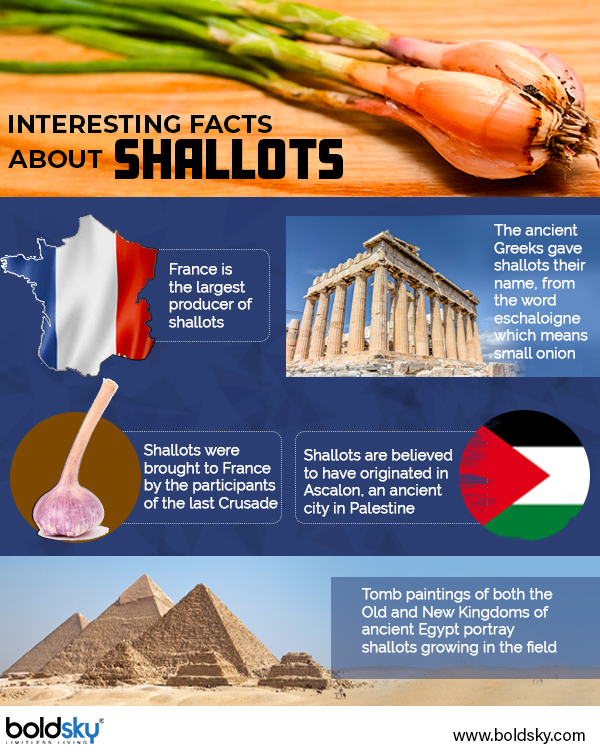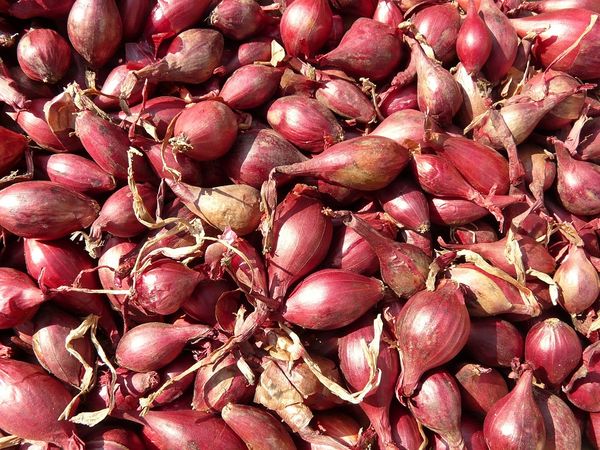Just In
- 3 hrs ago

- 4 hrs ago

- 7 hrs ago

- 8 hrs ago

Don't Miss
- Movies
 Game Changer: Ram Charan's Remuneration For Director Shankar's Hyped Bilingual Political Drama Will SHOCK You
Game Changer: Ram Charan's Remuneration For Director Shankar's Hyped Bilingual Political Drama Will SHOCK You - Sports
 'MS Dhoni Angry and Throwing Helmet': CSK Legend Suresh Raina reveals shocking IPL Tale
'MS Dhoni Angry and Throwing Helmet': CSK Legend Suresh Raina reveals shocking IPL Tale - Automobiles
 Nissan Magnite Achieves 1 Lakh Unit Sales Milestone: Consistency Helps
Nissan Magnite Achieves 1 Lakh Unit Sales Milestone: Consistency Helps - Technology
 Lenovo Unveils IdeaPad Pro 5i Laptop With Intel Core Ultra 9 Processor – Check Price, Specs
Lenovo Unveils IdeaPad Pro 5i Laptop With Intel Core Ultra 9 Processor – Check Price, Specs - News
 Diamonds Worth ₹6.46 Crore Found Hidden In Noodles At Mumbai Airport, Passenger Arrested
Diamonds Worth ₹6.46 Crore Found Hidden In Noodles At Mumbai Airport, Passenger Arrested - Education
 WB Madhyamik Result 2024, WBBSE 10th Marksheet on wbresults.nic.in
WB Madhyamik Result 2024, WBBSE 10th Marksheet on wbresults.nic.in - Finance
 Sakuma Exports Secures Rs. 150 Cr Deal; Okays Rights Issue Amidst Positive Outlook
Sakuma Exports Secures Rs. 150 Cr Deal; Okays Rights Issue Amidst Positive Outlook - Travel
Kurnool's Hidden Gems: A Guide To Exploring India's Lesser-Known Treasures
7 Fascinating Health Benefits Of Shallots, Nutrition And Vegan Recipes
You may know it as 'small onions'. Shallots, scientifically termed as Allium cepa var. aggregatum is considered a variety of onions, mainly because of the appearance and of the same species, Allium cepa. Shallots are related to garlic and vary in colour from golden brown to rose-red.
Having been cultivated for thousands of years, shallots are mentioned in various Greek literature and history. The versatility of the vegetable makes it a popular one, it can be added to salads or be made into pickles.

The distinct flavour of shallots are favoured all around the world and is widely used in French and South Asian cuisines. However, it is not just these properties of the vegetable that makes it a favourite. Packed with various nutrients, this amazing little cousin of onion can help speed up digestion, manage diabetes, improve blood circulation and much more [1] [2] .
Interested? Read on to know the health benefits possessed by shallots and the ways you can incorporate them into your daily diet.
Nutritional Value Of Shallots
100 g of shallots contain 72 calories of energy. The remaining nutrients are mentioned below [3] :
- 16.8 g carbohydrates
- 3.2 g total dietary fibre
- 7.87 g sugar
- 79.8 g water
- 2.5 g protein
- 37 mg calcium
- 1.2 mg iron
- 21 mg magnesium
- 60 mg phosphorus
- 334 mg potassium
- 12 mg sodium

Health Benefits Of Shallots
1. Improve blood circulation
Rich in iron, copper, and potassium, consuming shallots can help stimulate the production of red blood cells. This in turn help in improving your blood circulation, transportation of more oxygen to important areas of the body, improving energy levels and also improve cell regrowth [4] .

2. Manage cholesterol
Shallots contain a compound called allicin, which can help manage the cholesterol levels in your body. The compounds produce an enzyme called reductase (produced in the liver) which can help in controlling the cholesterol production [5] .
3. Improve heart health
As aforementioned, shallots are rich in allicin and thereby help in managing the cholesterol levels in your body. This property helps in improving your heart health because low levels of cholesterol in the body can help prevent the onset of atherosclerosis, coronary heart disease, heart attacks, and strokes [5] .
4. Reduce blood pressure
Rich in potassium and allicin, the combination of these two act as a vasodilator, promoting the release of nitric oxide in the body - directly impacting the high blood pressure levels. Potassium helps in relaxing the walls of the blood vessels and promotes free blood flow [6] .
5. Control diabetes
Allium and allyl disulfide, two phytochemical compounds found in shallots possess anti-diabetic properties. These compounds help in managing and regulating the levels of blood sugar in the body.

6. Enhance brain function
Gamma-aminobutyric acid present in shallots is a key neurotransmitter which has a direct impact on relaxing your brain. Also, various minerals and vitamins found in shallots, including pyridoxine promote the same function, calming your nerves and providing relief from stress [7] .
7. Maintain bone density
Shallots are rich in calcium, which makes them beneficial for not only maintaining but also improving your bone density. Consuming shallots regularly can be exceptionally good for your bone health [8] .
13 Health Benefits Of White Onions
Apart from these benefits, shallots are exceptionally good for hair growth and also for your skin.
Healthy Shallot Recipes
1. Green beans with caramelized shallots and almonds
Ingredients[9]
- 10-12 fresh green beans
- 1 shallot bulb, peeled and thinly sliced
- 1 tablespoon coconut oil
- 1 teaspoon apple cider vinegar
- sea salt, to taste
- fresh ground pepper, to taste
- 3 tablespoons chopped fresh parsley
- 2 tablespoons toasted almond slices
Directions
- Heat a large dry skillet over medium heat, add almond slices and cook until toasted.
- In another pan, add coconut oil and heat over high heat until melted.
- Add in shallot slices, reduce the heat and cook shallots until caramelized, stirring frequently.
- Boil the green beans in a pan of water for 3-4 minutes.
- Drain and transfer the beans to the pan with shallots.
- Add in chopped parsley and apple cider vinegar.
- Season with sea salt and pepper.
- Heat for another 3-4 minutes.
- Top with toasted almonds and serve.
2. Carrot ginger soup with crispy shallots and coconut cream
Ingredients
- 2 tbsp avocado oil
- 1 medium onion, chopped
- 3 cloves garlic, minced
- 3 tbsp ginger, minced or finely diced
- 4 carrots, peeled and chopped
- 4 cups vegetable broth
- 1 bay leaf
- 1 tsp cinnamon
- 1 tsp salt
Directions
- Heat the oil over medium-high heat in a large pot.
- Add the onions and cook for 1-2 minutes.
- Add the ginger and garlic to the pot and stir.
- Place the chopped carrots in the pot and cook for 10 minutes, while stirring.
- Add the broth, bay leaf, cinnamon and salt to the pot.
- Bring to a boil, then cover and turn the heat to low and cook for 20-30 minutes.
- Turn off the heat and remove the bay leaf.
- Blend the soup until it's puréed and smooth.
- Heat the avocado oil in a pot on medium-high heat and add the shallots.
- Cook the shallots for 1-2 minutes, stirring frequently.
- Once the shallots are golden in colour remove and add to the soup.
Side Effects Of Shallots
- Individuals with bleeding disorders should avoid shallots as it may slow down blood clotting, thereby increasing the risk of bleeding [10] .
- Due to its ability to lower blood sugar levels, consumption of it along with diabetes medication can reduce the sugar levels way.
- [1] Bongiorno, P. B., Fratellone, P. M., & LoGiudice, P. (2008). Potential health benefits of garlic (Allium sativum): a narrative review. Journal of Complementary and Integrative Medicine, 5(1).
- [2] Griffiths, G., Trueman, L., Crowther, T., Thomas, B., & Smith, B. (2002). Onions—a global benefit to health. Phytotherapy research, 16(7), 603-615.
- [3] Rahal, A., Mahima, A. K., Verma, A. K., Kumar, A., Tiwari, R., Kapoor, S., ... & Dhama, K. (2014). Phytonutrients and nutraceuticals in vegetables and their multi-dimensional medicinal and health benefits for humans and their companion animals: A review. J. Biol. Sci, 14(1), 1-19.
- [4] Keusgen, M. (2002). 15 Health and Alliums. Allium crop science: recent advances, 357.
- [5] Blekkenhorst, L., Sim, M., Bondonno, C., Bondonno, N., Ward, N., Prince, R., ... & Hodgson, J. (2018). Cardiovascular health benefits of specific vegetable types: a narrative review. Nutrients, 10(5), 595.
- [6] Khanthapok, P., & Sukrong, S. (2019). Anti-aging and Health Benefits from Thai Food: Protective Effects of Bioactive Compounds on the Free Radical Theory of Aging. Journal of Food Health and Bioenvironmental Science, 12(1), 88-117.
- [7] Xiaoying, W., Han, Z., & Yu, W. (2017). Glycyrrhiza glabra (Licorice): ethnobotany and health benefits. In Sustained Energy for Enhanced Human Functions and Activity (pp. 231-250). Academic Press.
- [8] Calica, G. B., & Dulay, M. M. N. (2018). ASSESSMENT OF THE POSTHARVEST SYSTEMS AND LOSSES OF SHALLOTS IN ILOCOS, PHILIPPINES. ASIAN JOURNAL OF POSTHARVEST AND MECHANIZATION, 1(1), 81.
- [9] Bryan. L. (2015, November 14). Shallot recipes [Blog post]. Retrieved from https://downshiftology.com/recipes/carrot-ginger-soup-crispy-shallots/
- [10] Kim, J., Woo, S., Uyeh, D. D., Kim, Y., Hong, D., & Ha, Y. (2019, July). Analyses of Garlic Stem Strength for Development of Cutting Machine. In 2019 ASABE Annual International Meeting (p. 1). American Society of Agricultural and Biological Engineers.
-
 wellnessDifference Between Spring Onions, Shallots And Red Onions: Which Is Healthier?
wellnessDifference Between Spring Onions, Shallots And Red Onions: Which Is Healthier? -
 healthDo You Keep A Clove Of Garlic Under Pillow? Not To Keep Vampires At Bay, There May Be Scientific Reasons
healthDo You Keep A Clove Of Garlic Under Pillow? Not To Keep Vampires At Bay, There May Be Scientific Reasons -
 healthGet Your Groove On: 5 Health Benefits Of Dancing To Afro Beats
healthGet Your Groove On: 5 Health Benefits Of Dancing To Afro Beats -
 healthIndigenous Delicacies: 5 Rare Indian Wild Foods That Are So Healthy You Should Try It!
healthIndigenous Delicacies: 5 Rare Indian Wild Foods That Are So Healthy You Should Try It! -
 healthHaving Chicken Soup At Home Can Cure These Health Issues
healthHaving Chicken Soup At Home Can Cure These Health Issues -
 healthBoost Your Health with Beetroot: Health Benefits And Ways To Add The Colourful Veggie In Your Diet
healthBoost Your Health with Beetroot: Health Benefits And Ways To Add The Colourful Veggie In Your Diet -
 healthHealth Benefits Of Garam Masala: From Digestion To Weight Loss, Proper Use Can Yield Many Benefits
healthHealth Benefits Of Garam Masala: From Digestion To Weight Loss, Proper Use Can Yield Many Benefits -
 healthAyurvedic Wisdom: Panchamrit's Surprising Health Benefits
healthAyurvedic Wisdom: Panchamrit's Surprising Health Benefits -
 healthUnveiling the Power of Turmeric Ghee: An Ancient Ayurvedic Secret!
healthUnveiling the Power of Turmeric Ghee: An Ancient Ayurvedic Secret! -
 healthPlant-Based Diet And Nutrition: Your Key To A Stronger Immune System!
healthPlant-Based Diet And Nutrition: Your Key To A Stronger Immune System! -
 healthExperience the Healing Power of Indian Herbal Teas!
healthExperience the Healing Power of Indian Herbal Teas! -
 healthInternational Cat Day 2023: Did You Know That Cat Purring Can Benefit Your Health? Check Out How!
healthInternational Cat Day 2023: Did You Know That Cat Purring Can Benefit Your Health? Check Out How!


 Click it and Unblock the Notifications
Click it and Unblock the Notifications



